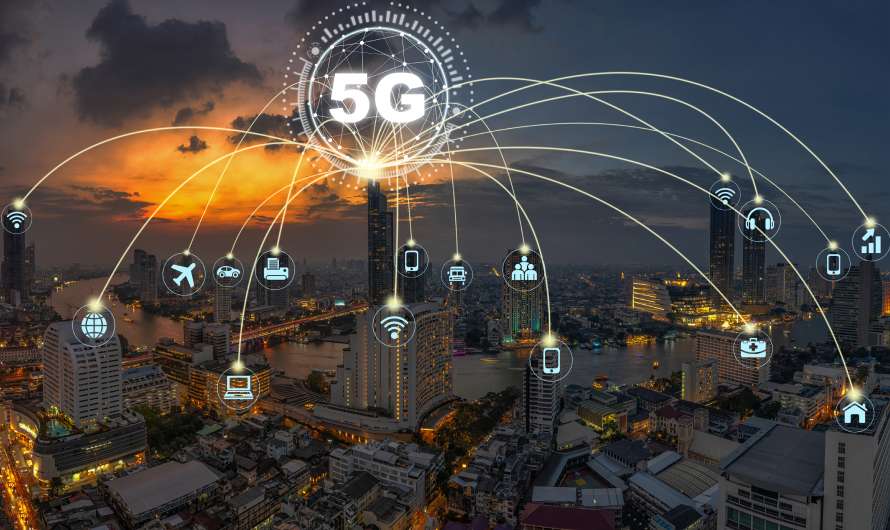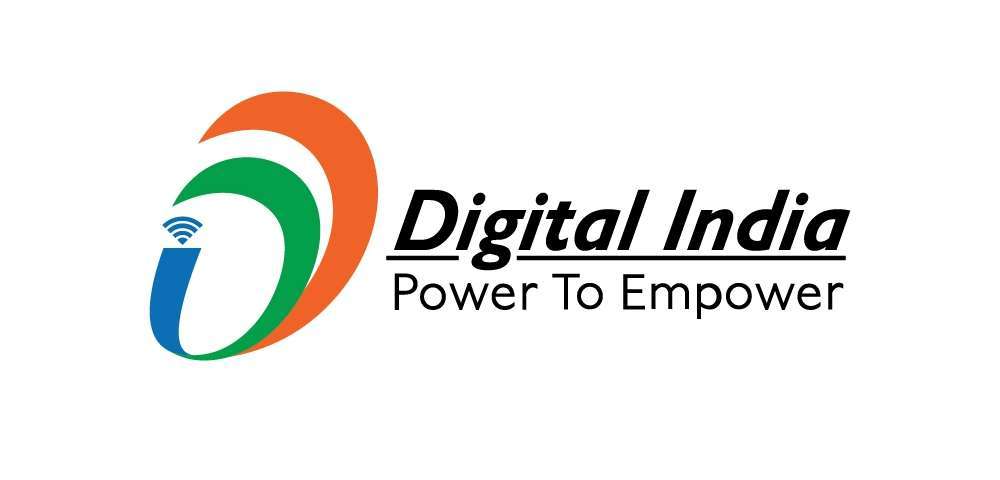The Strong Impact of 5G on the global economy

Theme: The promise of 5G has been echoed throughout the business world for years. 5G’s faster speed, lower latency and ability to connect vastly higher numbers of devices than previous generations of mobile technology offered executives a glimpse of a more efficient and productive future. By providing the basis for ubiquitous ultra-fast broadband, 5G opens up possibilities far beyond the reach of 4G or Wi-Fi 6. This promise has only grown more critical today, as leaders consider how best to repair, rethink and reconfigure their businesses for the post–COVID-19 world. Futuristic Vision on 5G: Qualcomm predicts the 5G value chain will generate up to $3.5 trillion in revenue in 2035, and support as many as 22 million jobs. Qualcomm also forecasts that 5G will boost global GDP growth by $3 trillion cumulatively from 2020 to 2035. A report from PSB Research, which surveyed over 3,500 people, including business decision leaders, analysts and tech enthusiasts, found that as a result of 5G: 91% expect new products and services that have yet to be invented 87% expect new industries to emerge 82% expect small business growth and more global competition 85% expect it to make companies more globally competitive 89% expect increased productivity Notably, an economic impact study conducted by IHS Markit and validated by Dr David Teecethe indicates that 5G will catapult mobile into the exclusive realm of General Purpose Technologies, like electricity and the automobile, that provide the foundation for massive innovation, give rise to new industries and benefit entire economies. This will happen as 5G advances mobile from a set of technologies connecting people to people and information to a unified fabric connecting people to everything. According to the study, in 2035, when 5G’s full economic benefit should be realized across the globe, a broad range of industries – from retail to education, transportation to entertainment, and everything in between – could produce up to $12.3 trillion worth of goods and services enabled by 5G. Key features of 5G: Faster Speeds – 5G is ready to be a whole lot quicker than previous generation networks – a few are saying a whole lot as 100 times faster than existing 4G networks. To be more particular, 5G may additionally offer speeds as fast as 10Gb/s. This might mean the capability to download a full HD movie in under 10 seconds on a 5G network, in comparison to ten minutes on 4G. Some estimates see 5G being even quicker than that. Lower Latency – It will even have a lot lower latency. We’ll see a whole lot less postponement or lag while we’re in the use of our phones and other devices. With 4G networks, latency is normally around 40-50 milliseconds. With 5G it needs to be 1 millisecond or less, that’s undetectable to the consumer. Greater Capacity – It may have greater capability, which means the networks can be able to cope higher with many excessive-demand programs all at once – from connected motors and IoT (Internet of Things) devices to virtual fact reports and simultaneous HD video streaming. Reliability – It is expected to be ‘ultra-dependable’, meaning no dropped calls or connectivity, so one can allow more ‘crucial’ use instances together with those related to virtual health and connected vehicles. Flexibility – It promises to allow a network to be divided into a couple of virtual networks so the operator can use the right ‘slice’ relying on the necessities of the use case. Improved Battery Life – While all this feels like it’d drain your battery pretty quickly, virtually 5G is being tipped to extend the battery life of gadgets by using it up to ten times. Effects of 5G: 5G creates an incredible opportunity for several industries, but additionally units the degree for massive-scale disruption. Major 5G community deployments are expected by 2023, and a projected 4.1B IoT mobile connections will use 5G worldwide by 2024, according to Ericsson. From permitting remote robotic surgical procedures and massive adoption of autonomous vehicles to improving crop and livestock control, 5G is poised to disrupt the world’s largest industries along with: 1. Manufacturing 2. Energy & Utilities 3. Agriculture 4. Retail 5. Financial Services 6. Media & Entertainment 7. Healthcare 8. Transportation 9. AR/VR 10. Insurance Potential Impacts: 1. The technology will provide seamless coverage in remote areas across the country. It will increase energy efficiency, spectrum efficiency and network efficiency. 2. It will also usher in the ear of technological advances in the country such as Virtual Reality (VR), Augmented Reality (AR) and more. These technologies will have an end-to-end effect on multiple sectors – healthcare, agriculture, education, disaster management and others. 3. It will also enable new services and products powered by Internet of Things (IoT) technologies. The advanced abilities offered by it will also drive new business models. 4. The arrival of 5G will also transform the transport and mobility sector. Using it a network of electric vehicles (EVs) and charging stations can be established to help maximise the cost-effectiveness of the EV ecosystem. 5. Next-generation networks will also aid remote working more effectively. 5G-powered smart buildings can help provide a more comfortable working environment for employees, boosting productivity along with reducing costs for employers. 6. Next-generation technology will also have an impact on the way of production and distribution of goods. Applications of 5G in the manufacturing sector include reduced costs, lower downtime, minimum wastage and improve productivity. 7. It is expected to bring the logistics cost to 5% from 13-14% at present. 8. It will also have a big impact on the safety and surveillance sector. 5G technology and its applications will enable remote control over disaster-hit areas, live 4K feed from HD cameras installed in public spaces and more. 9. It will also help in minimising the role of humans in dangerous industrial
The New Digital India 2023

Theme: Digital India is a flagship program released by means of the Government of India in 2015 with the goal of transforming India right into a digitally empowered society and expert economic system. The application ambitions to offer virtual infrastructure, digital literacy, and digital offerings to all residents of India. The program has been a success in bridging the virtual divide in India and has introduced a digital revolution in the Country. In this weblog, we can know about the diverse factors of Digital India, its effect on the country, and the demanding situations faced in its implementation. Digital Infrastructure: Digital India aims to provide a secure and reliable virtual infrastructure that connects every part of the country. The program pursuits to provide excessive-speed net connectivity to all citizens, which include the ones in rural areas. The BharatNet assignment was released in 2011 to attach 0.25 million panchayats through an optical fibre (one hundred MBPS) and join India’s villages. The venture’s objective is to provide high-speed net connectivity to all villages in India. The authorities have additionally launched numerous schemes beneath its Digital India campaign to attach complete India. The program has been successful in providing internet connectivity to far regions of the country. Here are some recent data points on the Digital India campaign: The total internet connections in India increased from 25.15 crores to 85 crores in June 2023, which constitutes a growth of 231%. A project called ‘The BharatNet’ aims to connect all 2.5 lakh Gram Panchayats of the country through a high-speed network potential. India’s GDP would have reached around $1 trillion by 2025, with respect to a report by economic analysts. Carbon emissions will be addressed by cloud computing and assist in improving mobility and flexibility. The country is digitally empowered in the area of technology and is a global success story only because of the Digital India landscape. The biggest YouTube audience is bagged by India globally and an average of 8.48 gigabytes per month are consumed by smartphone users. The digital revolution in India is holding on to economic growth and it is expected to deal with poverty, scarcity and illiteracy is great means. The government and the private sector are moving rapidly shifting themselves into high-speed networks to promote highly technically sustainable platforms to people in India. The digital experts are so confident that the Bharat Net project will surely benefit people in rural areas and promote good welfare. Digital Services: Digital India’s goal is to offer government schemes and services to residents via digital systems. The system targets to provide virtual services consisting of e-governance, e-fitness, e-education, and e-trade to all citizens. The software has been a success in supplying virtual services to citizens, which has minimized travel and pollutants. The authorities have released numerous schemes such as the National Digital Literacy Mission and the Digital Saksharta Abhiyan to provide virtual literacy to citizens. Digital Payments and Financial Inclusion: Digital India has performed a pivotal role in promoting virtual payments and making sure financial inclusion for the masses. With projects like Unified Payments Interface (UPI), Bharat Bill Payment System (BBPS), and Aadhaar-enabled charge structures, the government has facilitated stable and convenient transactions, permitting citizens to include a cashless economic system. The Jan Dhan Yojana, coupled with online banking services, has ensured that even the unbanked population can get sufficient economic services. This shift towards online payments has now the handiest progressed efficiency and transparency and has reduced the dependence on cash and eliminated formal financial inclusion. E-Governance for Efficient Services: Digital India has introduced a substantial shift in the manner authorities’ services are delivered to citizens. Through the implementation of diverse e-governance initiatives, which include the Digital Locker, e-Hospital, and MyGov, the authorities have streamlined administrative strategies and made them more accessible to the general public. Online platforms and mobile applications have simplified tasks which include applying for passports, submitting tax returns, and having access to essential files. This has not only saved time and resources but also reduced corruption and stepped forward transparency in the machine, leading to greater responsibility. Challenges Faced: The implementation of Digital India has faced several traumatic conditions. The Digital India plan has faced challenges which include a loss of infrastructure, a loss of digital literacy among citizens, and a lack of a proper budget. The plan has additionally confronted demanding situations collectively with a loss of coordination amongst precise authorities departments and a lack of knowledge among citizens about the advantages of digital services. The daily internet speed, as well as the Wi-Fi hotspots, are slow as compared to other developed nations. Most of the small and medium-scale industries have to struggle a lot for adapting to the new modern technology. Limited capability of entry-level smartphones for smooth internet access. In the successful implementation of the Digital India Programme, there are many roadblocks like digital illiteracy, poor infrastructure, low internet speed, connectivity issues, lack of coordination among various departments, issues pertaining to taxation etc. The biggest challenge faced by the Digital India programme is slow and delayed infrastructure development. Conclusion: Digital India is a flagship program released by the Government of India to convert India into a digitally empowered society and information financial system. The program has promoted virtual literacy amongst citizens, which has brought approximately an increase in the use of digital systems and services. However, this system has faced numerous challenges, and the authorities are working to address those weak conditions to make certain the achievement of the program.
